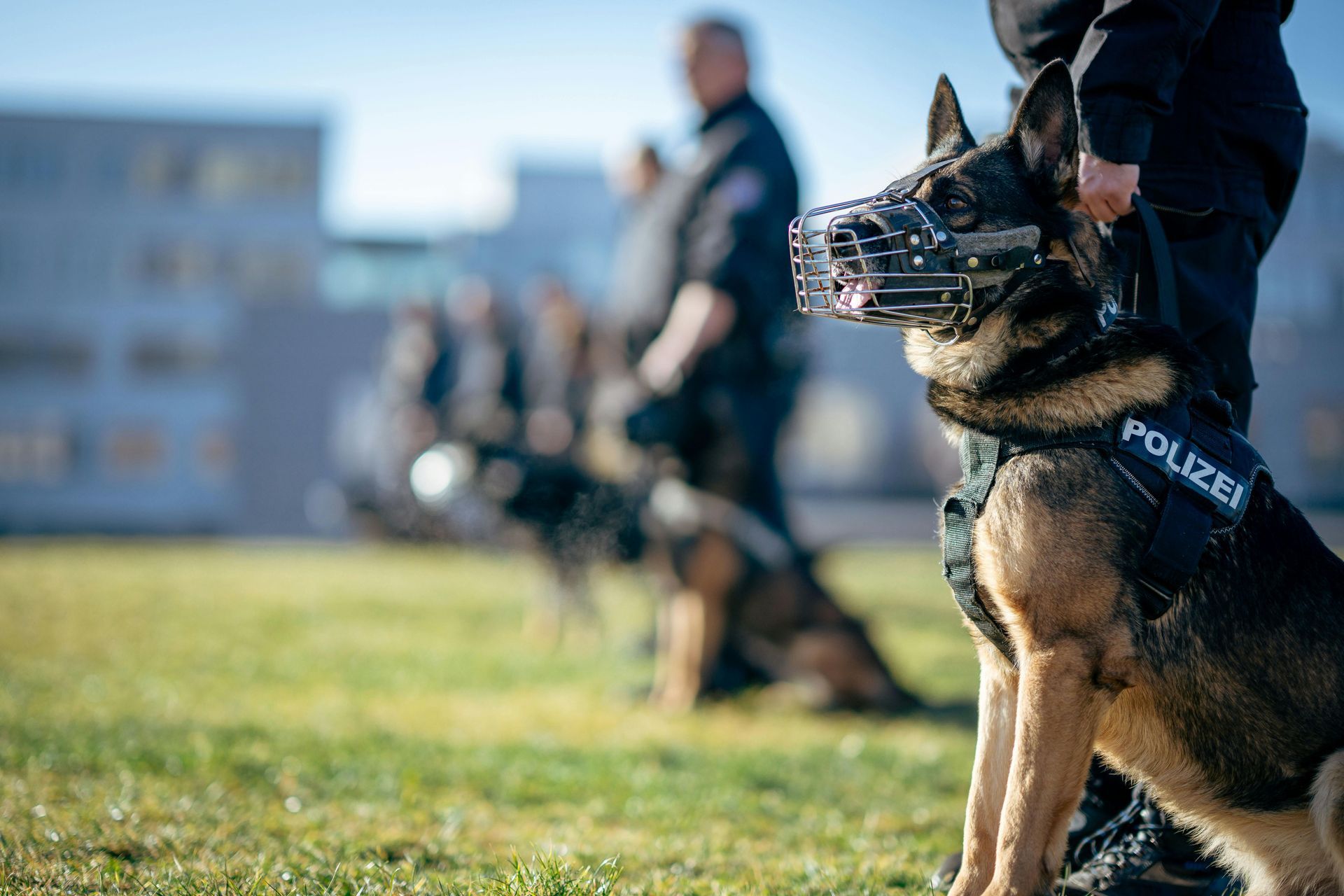Probable Cause or Probable Fiction? The Legal Myth of the Drug Sniffing Dog
False Alerts, Real Consequences: The Flawed Logic Behind Drug Dog Searches

The Myth of Canine Infallibility
For decades, drug detection dogs have been afforded an aura of near infallibility in courts. Law enforcement and courts often treat a canine “alert” as virtually synonymous with contraband being present. The U.S. Supreme Court has reinforced this perception: In Florida v. Harris, 568 U.S. 237 (2013), the Court ruled that a dog's certification and training were sufficient to establish probable cause for a search, without requiring field performance data. Justice Elena Kagan, writing for the unanimous Court, stated that "if a bona fide organization has certified a dog after testing his reliability in a controlled setting," then the dog's alert can be presumed reliable. Earlier, in Illinois v. Caballes, 543 U.S. 405 (2005), the Court even ruled that a well-trained drug dog’s sniff during a lawful traffic stop is not a “search” under the Fourth Amendment at all (since it supposedly only detects illegal contraband). This deference rests on the assumption that detection dogs are extraordinarily accurate.
However, this presumption has been challenged by subsequent studies revealing significant discrepancies between controlled training environments and real-world performance. Even in Caballes, Justice Souter pointedly observed in his dissent that “the infallible dog…is a creature of legal fiction” He noted that in real cases, dogs had documented error rates as high as 38%, and controlled testing showed false positives anywhere from 12.5% to 60% of the time.
Empirical Evidence of High False Alert Rates
United States
A 2011 analysis by the Chicago Tribune examined three years of data on police dog alerts during traffic stops in suburban Chicago. The study found that drugs or paraphernalia were discovered in only 44% of cases where dogs alerted. Notably, the accuracy dropped to 27% when the driver was Latino, suggesting potential bias in the deployment or interpretation of canine alerts. [1]
A 2011 study of an Illinois State Police drug dog program found similar results. During one operation analyzed by the Eleventh Circuit, state police stopped 1,230 cars and used two different dogs to sniff each vehicle; the dogs alerted on 28 cars, yet only 1 of those searches found drugs – meaning 96% of those alerts were false. Such examples underscore that even trained and certified dogs frequently make mistakes in real-world conditionsnacdl.orgnacdl.org. In fact, an amicus brief in Harris collected studies showing individual certified dogs’ accuracy rates ranging anywhere from 7% up to 56%, with average real-world accuracy around 26%. Any given alert was “almost three times more likely to be a false alert than an accurate one” in one large study. [2]
Australia
In New South Wales (NSW), Australia, the use of drug detection dogs has been scrutinized extensively. A review by the NSW Ombudsman covering the period from February 2002 to February 2004 found that in 74% of cases where a dog indicated the presence of drugs, no drugs were subsequently found. This high false alert rate has persisted over time. Despite these findings, NSW Police have continued to defend the program, citing instances where individuals admitted to prior drug contact as evidence of the dogs' accuracy. However, the Ombudsman criticized this rationale, stating that "some admissions may support the accuracy of drug detection dogs in picking up the scent of prohibited drugs, [but] this should not be confused with the accuracy of the dogs detecting persons currently in possession of prohibited drugs."[3]
Data collected over a ten-year period is not any more promising, NSW Police data from 2013 to mid-2023 indicates that drug detection dogs had a success rate of only 25%, with nearly 71,000 out of over 94,000 searches yielding no illicit drugs. [4]
The Role of Handler Influence and Bias
If drug-sniffing dogs have such acute noses, why do they miss so often? A major part of the answer lies not with the dogs, but with their handlers. Research shows that handler expectations, cues (intentional or not), and biases can significantly influence a dog’s alert behavior – a canine version of the famous “Clever Hans” effect. (Clever Hans was a horse that seemed to do arithmetic, but was actually responding to subtle cues from his owner) [5]
Drug dogs are highly attuned to their handlers’ body language, voice, and demeanor. They want to please their handlers and will often pick up on subconscious signals about where to alert. A landmark peer-reviewed study published in Animal Cognition (Lisa Lit et al. 2011) demonstrated this phenomenon under experimental conditions. Eighteen handler–dog teams were led through a set of rooms with no drugs present at all; however, the handlers were misled to believe that certain locations did contain hidden drugs (via the placement of red paper markers). The results were striking: every team produced false alerts, and the dogs alerted most often at the exact locations the handlers expected drugs (the marked spots). In fact, there were significantly more alerts at those handler-suggested locations than at spots containing distracting decoy scents (like sausages or tennis balls). This indicates the dogs were cueing off their handlers’ beliefs rather than smell alone. The researchers explicitly concluded that handler beliefs affected outcomes – a clear demonstration that detection dogs are susceptible to their human partner’s unintentional cues. [6]
Legal and Ethical Implications
The high rate of false alerts and the potential for handler-induced errors have significant legal and ethical implications. Searches based on unreliable dog alerts can lead to violations of individuals' Fourth Amendment rights against unreasonable searches and seizures. Moreover, the deployment of drug detection dogs has been criticized for contributing to racial profiling. As noted in the Chicago Tribune study, the lower accuracy rate of dog alerts involving Latino drivers raises concerns about discriminatory practices.
The Problem of Temporal Ambiguity: Canine Alerts and the “Staleness” Doctrine
A critical but often overlooked issue with drug detection dogs is their inability to determine the temporal proximity of the alleged drug presence. Unlike forensic tools that can date physical evidence or intelligence that ties specific activities to concrete timelines, canine alerts do not distinguish whether the odor detected emanates from recent drug activity or residual scent from past contact. This deficiency introduces a dangerous ambiguity into the legal equation—one that, paradoxically, seems to be treated more leniently in warrantless searches than it would be in traditional warrant applications.
“The Dog Smelled Drugs at Some Point”—A Heads-I-Win, Tails-You-Lose Logic
In practice, handlers and prosecutors frequently rely on circular reasoning when defending false alerts. When a dog alerts and no drugs are found, the justification is often that the dog must have detected residual odor from drugs once present but now removed. This untestable hypothesis transforms every false positive into a retroactive success.
This rationale creates what some defense attorneys have criticized as a "heads I win, tails you lose" proposition. If drugs are found, the dog was right. If no drugs are found, the dog was still right—just not in a way anyone can prove or contest.
The Legal Contradiction: Staleness Doctrine in Search Warrants
Contrast this with how courts treat stale information in the context of search warrants. Under the Fourth Amendment, probable cause must be based on a fair probability that contraband or evidence of a crime will be found in a particular place at the time of the search. This requirement is enforced through the “staleness doctrine,” which dictates that outdated information—no matter how credible—cannot support a valid warrant if it fails to establish present-day likelihood; information a week old may be stale if it concerns a single instance of illegal activity, but information several months old may not be stale if it concerns an ongoing pattern of criminal behavior.
This judicial insistence on temporal relevance is essential to Fourth Amendment protections. Yet the same courts often uphold warrantless searches based on canine sniffs—without requiring any temporal specificity.
An Unjustified Loosening of Standards
The problem is glaring: if stale data from an informant is insufficient for a warranted search, why is an indeterminate, unprovable canine sniff which at best indicates that at some indefinite point in time in the past drugs may have been present sufficient for a warrantless one?
In
Florida v. Harris, the Supreme Court held that a certified detection dog's alert alone could constitute probable cause. But it did not require the government to demonstrate when or whether the detected scent related to current criminal conduct. The decision emphasized the dog's reliability in controlled tests but ignored the dog’s complete inability to establish whether drugs are presently in a vehicle or building (let alone the dog's reliability in "real world" application.)
The failure of a detection dog to distinguish between recent and remote presence of drugs makes its alert of minimal probative value—especially where Fourth Amendment interests are at stake.
Warrantless Yet Weaker
This creates a troubling hierarchy of constitutional standards: the weaker the evidence (an unverified canine sniff), the less judicial oversight is applied. Meanwhile, stronger evidence (sworn affidavits supported by corroborating data) is held to a higher standard. This inversion of Fourth Amendment logic undermines the very rationale behind probable cause requirements.
Indeed, as the U.S. Supreme Court recognized in Katz v. United States, 389 U.S. 347 (1967), “searches conducted outside the judicial process, without prior approval by judge or magistrate, are per se unreasonable under the Fourth Amendment—subject only to a few specifically established and well-delineated exceptions.”
Canine sniffs do not merit exemption from this principle, particularly when they are untethered from any capacity to determine the timing of the alleged criminal act. Unlike a confidential informant’s testimony or surveillance footage, a dog’s alert lacks context, corroboration, or accountability.
Unmasking the Fiction of Probable Cause
The inability of detection dogs to pinpoint when drugs were present should weigh heavily against their evidentiary value—especially in the absence of a warrant. Courts’ willingness to treat such alerts as functionally equivalent to reliable, time-bound evidence introduces a systemic double standard. If outdated intelligence fails the “staleness” test for warrants, then unmoored canine alerts—often shielded from scrutiny under the guise of training and certification—must fail a fortiori.
Final Point: The Legal Reality—Why Appellate Courts Are Unlikely to Abandon the Canine Fiction
Despite the compelling scientific, logical, and constitutional arguments against treating a drug detection dog’s alert as sufficient to establish probable cause—particularly in light of the staleness doctrine’s strict application in warrant jurisprudence—appellate courts are unlikely to abandon this deeply entrenched legal fiction. The reason lies not in law, but in the political and institutional realities that shape judicial decision-making at the appellate level.
While trial courts occasionally suppress evidence obtained from unreliable or ambiguous canine alerts, these decisions rarely survive appellate scrutiny. And the reasons why have little to do with legal consistency. Rather, appellate courts—despite their ostensible role as guardians of constitutional principle—are not immune to the pressures of policy and politics. They are acutely aware that a ruling discrediting canine alerts as insufficient to establish probable cause would do more than simply reinterpret the Fourth Amendment; it would delegitimize decades of policing practices and call into question the legality of thousands—if not millions—of prior searches.
More to the point, it would effectively invalidate a law enforcement tool in which departments have invested vast sums of public money, resources, and training. Drug detection dogs are not only a budget line item; they are institutional symbols—paraded in public demonstrations, cited in funding proposals, and woven into the operational fabric of drug interdiction policy. Courts know this. And so do prosecutors.
To acknowledge that these dogs cannot distinguish between present and past odor, or that their alerts are too temporally ambiguous to support probable cause, would be to admit that entire units of law enforcement have been operating on constitutionally shaky ground. Few appellate courts are willing to trigger that reckoning. Courts have carved out exceptions and deferrals to supposed “trained dog behavior” in ways that would not be tolerated for human informants or technological surveillance tools.
The unspoken truth is that judicial reluctance to dismantle the legal foundation of canine sniffs is not due to the strength of the doctrine—it is due to the institutional costs of admitting that the foundation was always flawed. Upholding the sufficiency of a dog alert, even in the face of contradictory scientific and legal principles, allows courts to preserve the status quo under the guise of deference to law enforcement training and certification. In this sense, the question is not whether the law makes logical sense. It is whether the judiciary, particularly at the appellate level, is willing to confront the full implications of that logic. And history suggests that when law collides with entrenched policy interests, it is often the law that yields.
[1] Chicago Tribune analysis of suburban traffic stops (2007–09), as reported by NPR,
Eyder Peralta, Report: Drug Sniffing Dogs are Wrong More Often than Right, (January 7, 2011)
[2]NACDL et al. Amicus Brief in Florida v. Harris (2012), summarizing field studies.
[3]NSW Ombudsman Review of the Police Powers (Drug Detection Dogs) Act of 2001 (June 2006)
[4] SBS News, Fresh calls to end use of sniffer dogs at festivals after report finds low success rate (September 30, 2023)
[5]Eyder Peralta, Report: Drug Sniffing Dogs are Wrong More Often than Right (January 7, 2011)

